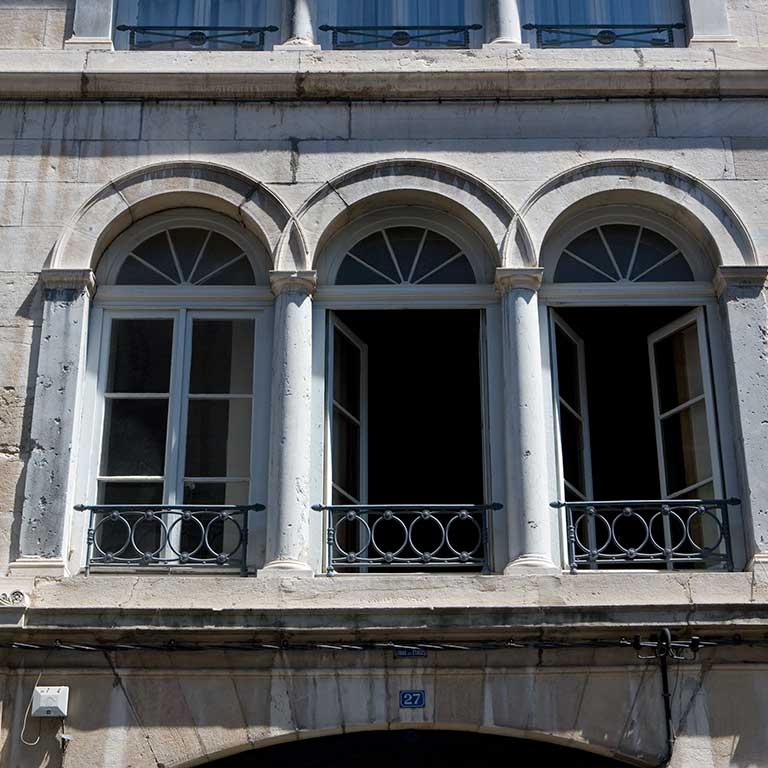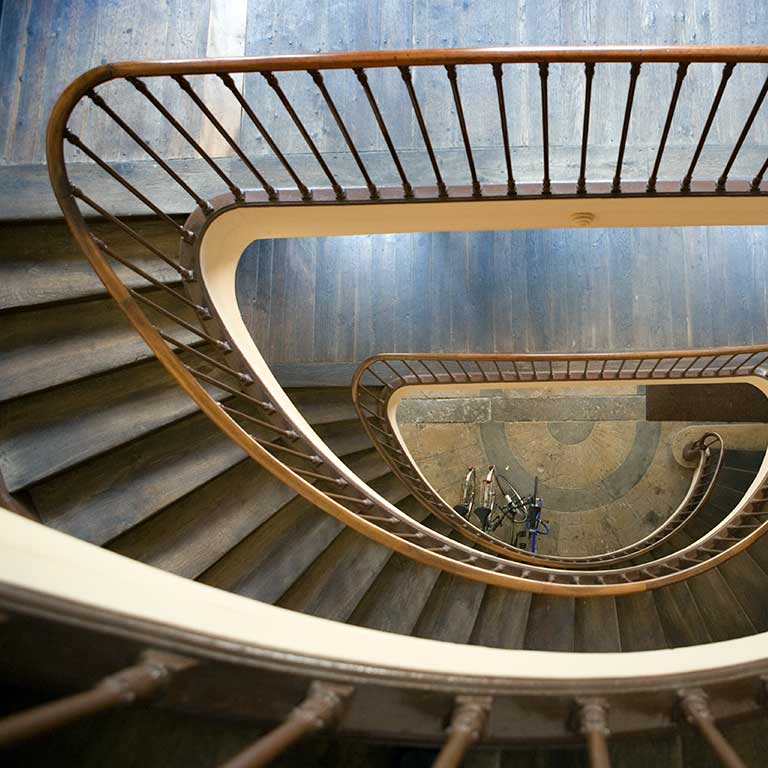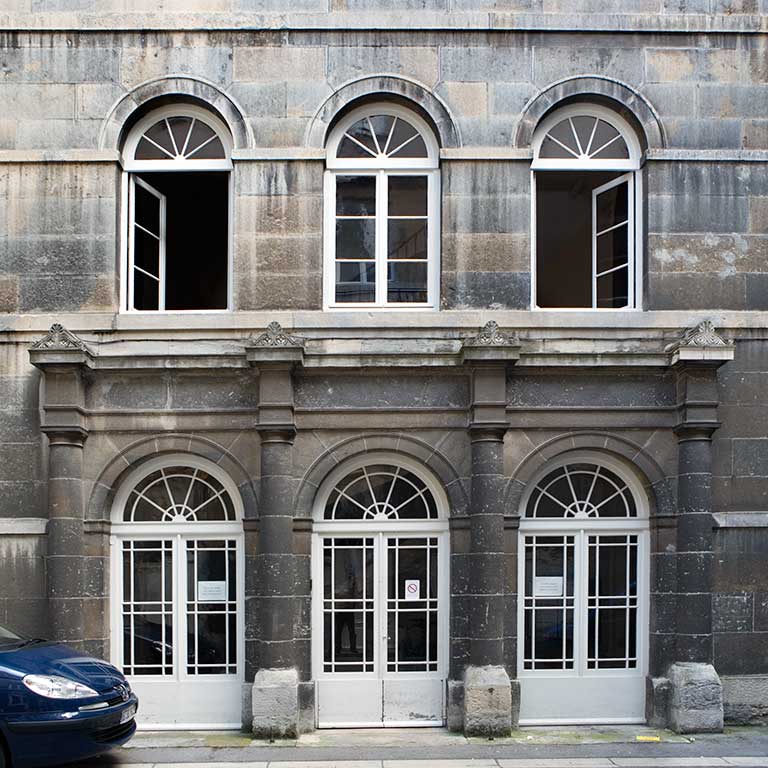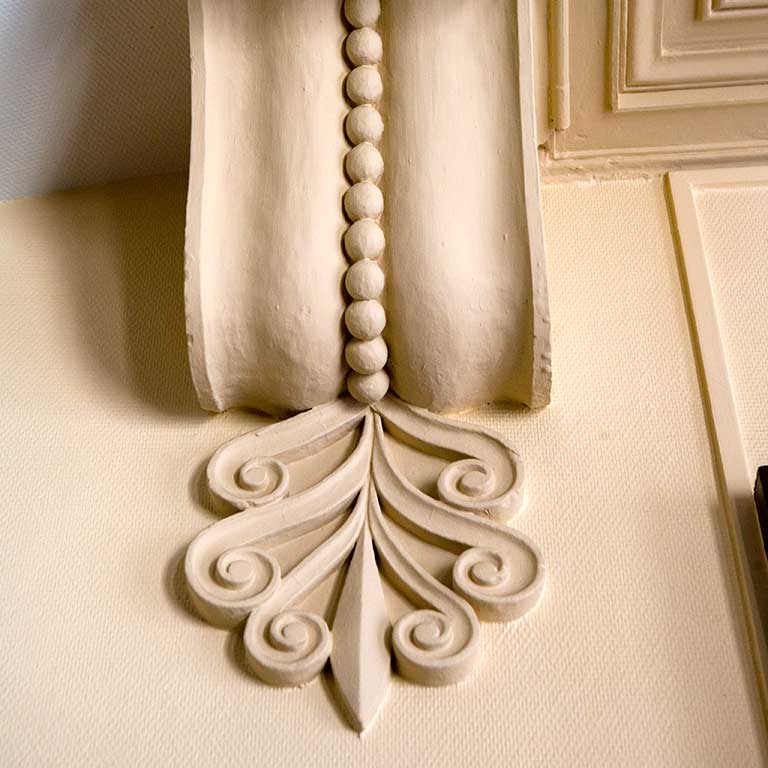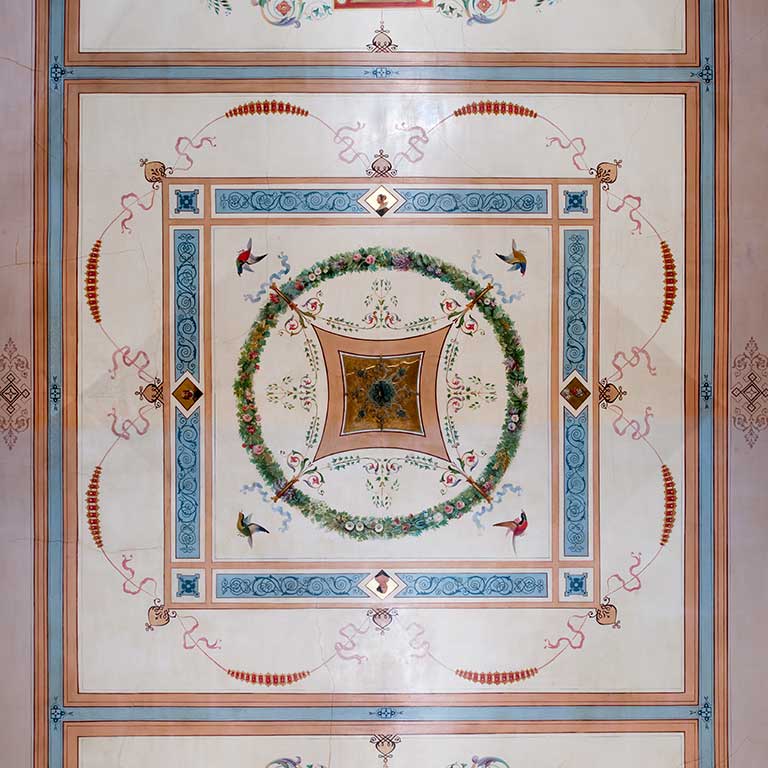In 1823, the architect Pierre Marnotte arrived in Besançon, and it was he who introduced facades reminiscent of Venetian palaces. One of the main features was a triplet of arched casement windows, flanked by another window on either side. Marnotte was the only supporter of this trend at this time, and you can see its characteristics on the facade of this building that he built in 1835 for the lawyer Grillet.
There are triplets of casement windows on each floor, highlighted by the use of blue veins in the local stone, and contrasting with the capitals on the second floor carved in white limestone. In the courtyard, the entrance of the main staircase was made more imposing by four Doric columns with projecting entablatures at the top. On these, there is a decoration consisting of two scrolls meeting each other, decorated with rosettes and topped with a small palm leaf. This decoration also appears over the pilasters flanking the entrance gate. It is one of the favourite motifs of the architect and you will see it on other facades.
And now, if you go back to 14, rue Mégevand, you will discover an early 18th century mansion.
